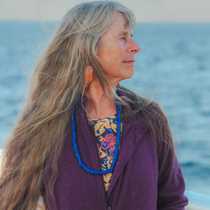Day at Sea
Our wakeup call this morning found the National Geographic Explorer off the coast of Latvia making her way slightly north and east heading towards our next stop, the Baltic country of Estonia. Our entire day would be spent at sea making a journey of 308 nautical miles.
The National Geographic Explorer left the dock in Riga, Latvia last night at midnight, beginning her evening cruise by heading into the Gulf of Riga through the Irbe Strait around Saaremaa and Hiiumaa Islands and into the Gulf of Finland. As our day progressed, we found our ship surrounded by the waters of the Baltic on all sides, which is a sea with an interesting geologic and cultural history. Throughout our day, many talks were presented by our National Geographic and Lindblad staff, delving into topics concerning this area of the world and the waters passing beneath the hull of the National Geographic Explorer.
The Baltic Sea, considered the world’s largest brackish lake, has 250 freshwater streams flowing into it from the many countries that surround this tightly enclosed body of water. The small opening near Denmark has the only entry for salt water coming in and going out. It takes 25 years for the water of the Baltic to completely turn around. With so much fresh water coming in and such a small percentage of salt water entering the Baltic, it is rated at having somewhere between 4 to 7 seven parts per thousand salinity, depending on the proximity to the saltwater entrance. Just outside of Denmark at that entrance to the Baltic, the North Sea has an average of 30 parts per thousand!
The Baltic Sea is also a body of water with 85 million people living within close range of its coastline. Our journey has taken us from the entrance of the Baltic in Denmark past Germany, Poland, Sweden, and Latvia. Each of these countries has offered a glimpse at their culture and history, adding to our journey. It is often said that one travels not just to learn about the place but also to make a journey, learning about oneself and bringing focus to the journey. Our day at sea gives each of us that opportunity to reflect, and to enjoy a myriad of talks from explorations into geography, the natural history of the Baltic, more wonderful visual views and ideas on making photographic images, a historical perspective on the origins of Slavic peoples and, in the last hours of the afternoon, an opportunity to see the film, “The Singing Revolution.”
In preparation for our next day in Estonia this film outlines events in Estonian history leading towards its independence in 1991. “The Singing Revolution” proved that culture could save a nation, using “patience as a weapon and remembering that caution is a virtue.”
The National Geographic Explorer continued her cruise throughout the evening beginning her approach to the coastline of Estonia just after 10:00pm. With distant city lights on the horizon, and the planet Jupiter and the Milky Way filling the sky with stars, our thoughts returned to a quote from our resident Estonian Geographic staff member Pritt Vesilind: “Old Estonians believed that the souls of the dead ascended into heaven through the smoke of burning boats, then settled as stars in the Milky Way. On Midsummer Nights they stood around the fire and sang the souls on to the afterworld.”
It has been a great day at sea, with thought provoking interaction and reflection. The evening stars were a map leading towards adventures with yet another country, exploring its culture and meeting its people even if just for a moment….




